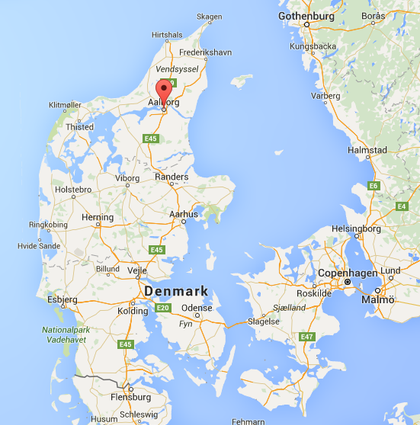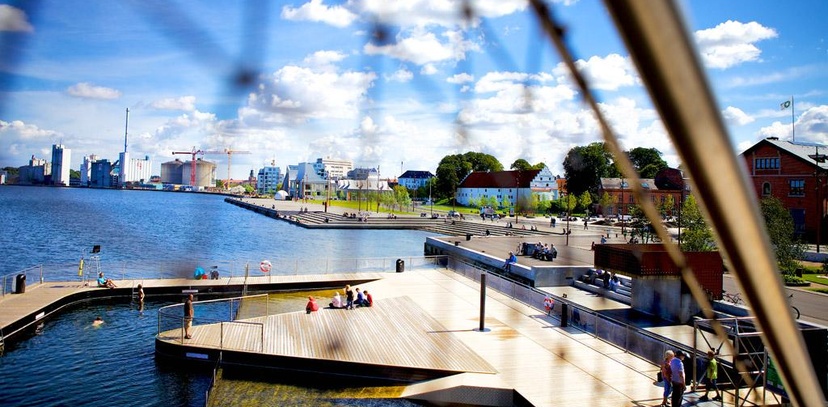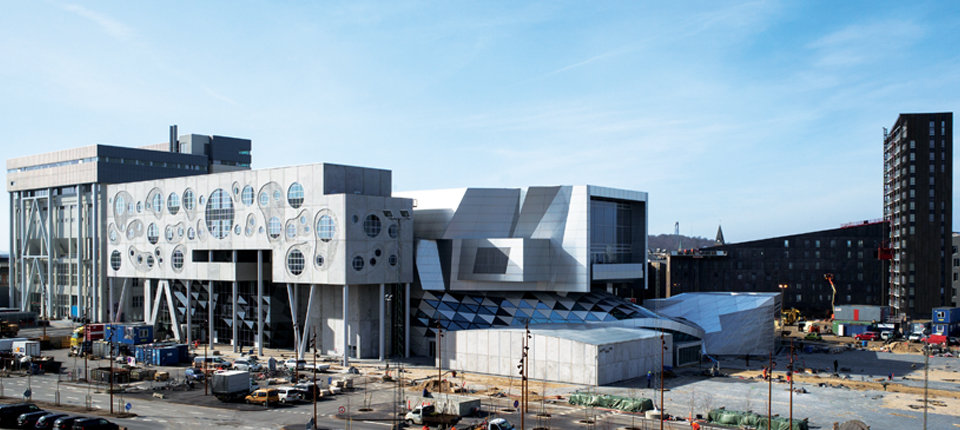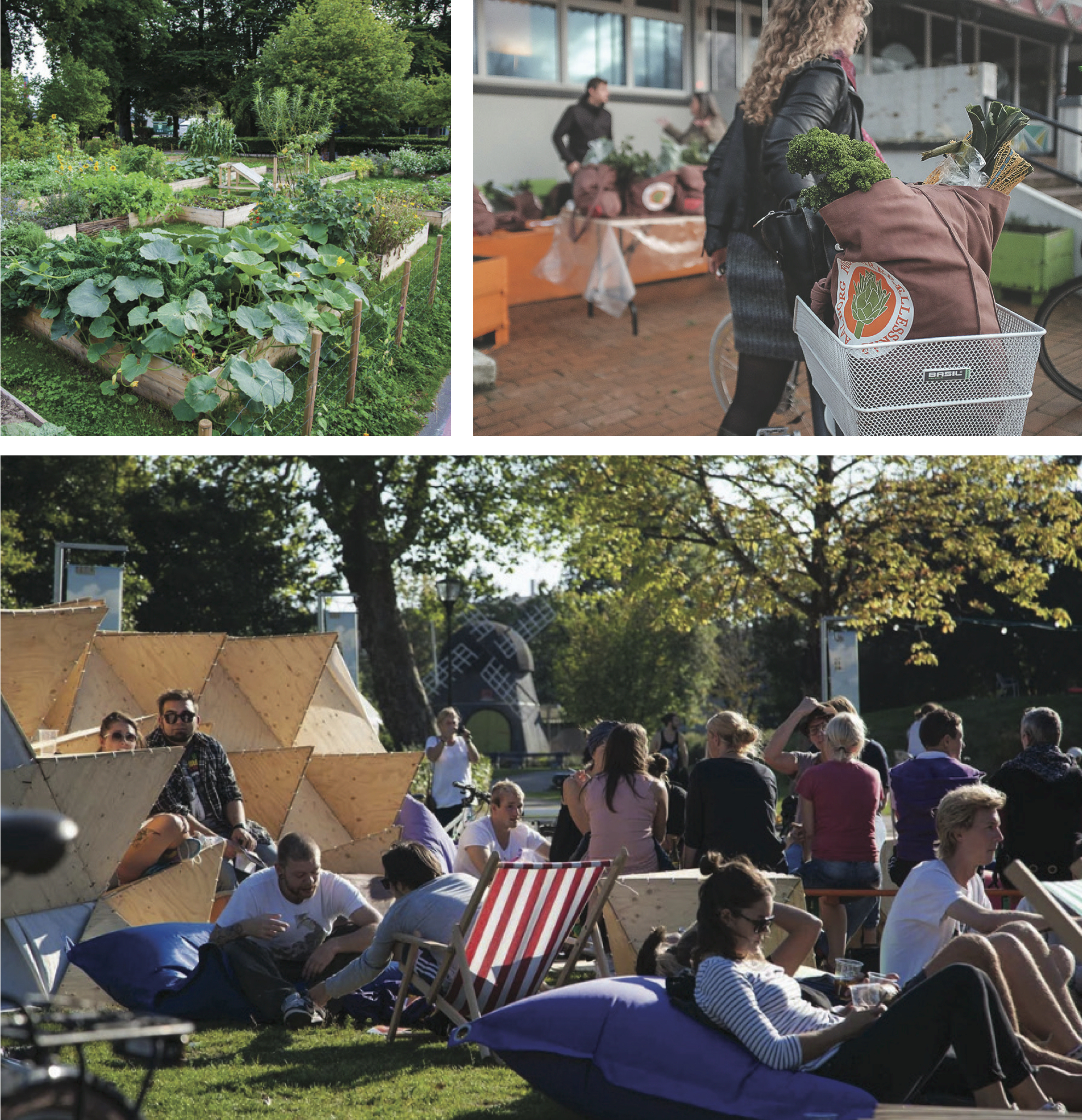

Denmark is often highlighted for it’s liveability, but most often people think of Copenhagen in this context. Recently Denmark’s fourth biggest city, Aalborg, has put itself on the map, going from recession to becoming a striving university city recently voted the happiest in Europe. The city has suffered from a notorious reputation for being a rough crime ridden industrial town. Despite this stereotype, the locals have long known it’s secret of being a good place to live. One of the reasons for this has been the city’s ability to use its history and identity to successfully turning it into a regional powerhouse.
The waterfront has become a symbol of Aalborg’s new identity as a cultural hub, with iconic architecture sprouting up along the harbour, including a new Music House designed by Coop Himmelb(l)au, an architecture centre (the last design by Jorn Utzon, the architect behind the Sydney Opera House), a cultural centre, and a new department for the University’s architecture and engineering students by Henning Larsen. The city has, within the last ten years, seen a building boom similar to that of its original industrialisation, but this time turning old factories and brownfields into cultural institutions.

Photo: Nordkraft Cultural Centre to the left, the House of Music in the centre and new student accommodation to the right.
As with the rest of Scandinavia, the northern part of Denmark is still partly ruled by the Law of Jante, and it takes a lot to impress the local “Aalborgensere” (residents of Aalborg). But the recent changes seem to have done this, and for good reasons. Despite high ambitions, the city has managed to keep its down-to-earth, industrial feel, which the residents love it for. From the rusty-look of the new lampposts to the buildings’ surfaces, the heritage as industrial port is constantly visible mimicking both the sea and the concrete production, which used to be one of the biggest industries in the city.
This is apparent in the new-build House of Music, which aesthetically points toward the waves of the sea simultaneously mimicking the shapes of it’s neighbour, Nordkraft, the transformed power station which now houses one of the City’s cultural centres. Not far away the former concrete and alcohol factories are currently undergoing extensive redevelopments turning them into housing and cultural hubs.
Contrary to most cities, Aalborg has reserved some of the best locations on the waterfront for it’s growing number of young residents. New-build student accommodation is scattered in between the new cultural institutions. Being far away from Copenhagen’s buzz, the council knows that attracting and keeping young people and families is key for its survival, and the city is doing everything it can to do so. This can be seen in the city’s public spaces, which is populated with an increasing number of cafes, restaurants. But it is also visible in the council’s support of local experiments and projects, which encourage people to participate in the development of the city.
An example of this is the old amusement park, Karolinelund, which after closing down in 2011 has been home to a temporary public space, allowing local community organisations, groups and residents, to use the space for free for events and activities, such as festivals, a food coop, allotments, pop-up art events, and a non-profit venue for electronic music. Allowing the park to be without a strict plan for a number of years has made it an oasis for a broad range of people giving them a sense of ownership over the place. All of this will inform a local plan for the park, which the council is currently preparing in collaboration with the users.

Activities in Karolinelund, photos by Byhaven Karolinelunden and Aalborg FF
As in many European countries, the outskirts of Denmark have suffered from deindustrialisation, leaving many areas with a decreasing population. This is especially visible in the northwestern part of the country, where Aalborg is situated. But with a population growth on 11.5% over the last ten years, Aalborg seems to have found a way to challenge this pattern, establishing itself as a cultural university city and a destination for tourists. This has been achieved by building big architecture and by engaging resident in developing the future of the city. Aalborg has showed that it is possible to reinvent the industrial town and make it one of the happiest places to live in.
This blogpost was written by Emma Nielsen, a former Aalborgenser.
